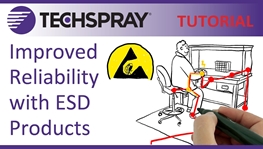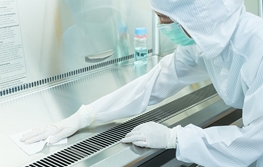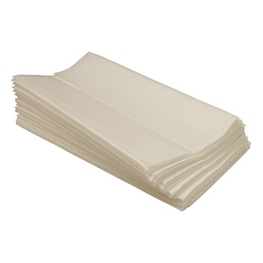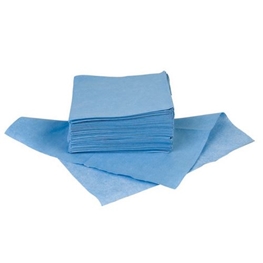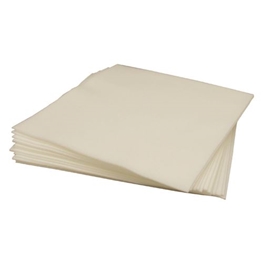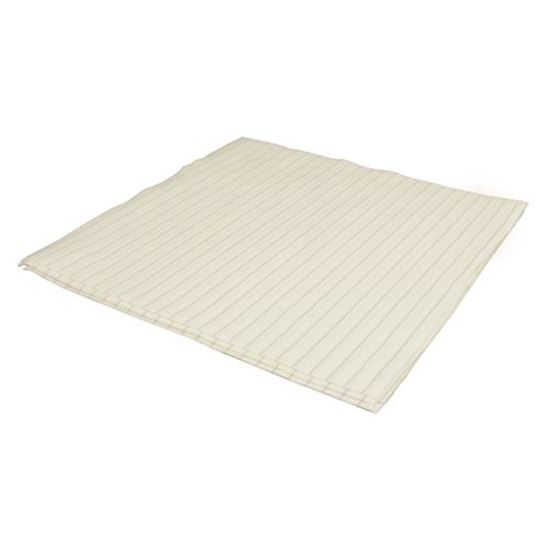
Techclean Anti-Static Wipe
Class 10 anti-static knit polyester wipe
FAQ's
- Use the right materials: Select appropriate wiping materials that are compatible with the cleanroom environment. Common materials include non-woven wipes, microfiber wipes, and polyester wipes. They should have low particle generation, low linting, and be free from contaminants.
- Wear proper cleanroom attire: Before starting any wiping procedure, ensure you are wearing the appropriate cleanroom garments, including gloves, a gown, and a face mask, to prevent the introduction of particles and skin oils.
- Prepare the wiping solution: If a wiping solution is necessary, use a cleanroom-approved cleaning agent. Some cleanrooms use isopropyl alcohol or other specialized cleaning solutions. Ensure the solution is properly diluted according to the manufacturer's recommendations.
- Follow a wiping pattern: Adopt a systematic wiping pattern to ensure complete coverage of the area. Start from the cleanest area and work towards the dirtier zones. Avoid cross-contamination between different surfaces.
- Use gentle pressure: Apply only light pressure while wiping to avoid damaging sensitive surfaces or releasing particles into the air.
- One-directional wiping: Whenever possible, use one-directional wiping, moving from one side to the other, to prevent particles from being redistributed.
- Change wipes regularly: Replace wipes frequently to avoid spreading contaminants. Dispose of used wipes properly according to cleanroom protocols.
- Avoid wiping overhead surfaces: Wiping overhead surfaces can release particles downward, contaminating lower surfaces. Use alternative cleaning methods for these areas.
- Follow cleanroom class-specific protocols: Different cleanrooms have different cleanliness classifications (ISO Class 1 to 9, for example), each with its specific protocols. Ensure you follow the appropriate procedures for your cleanroom class.
- Perform regular training: All cleanroom personnel should receive proper training on cleanroom wiping techniques to ensure consistency and effectiveness.
IPA is a powerful solvent and can break down or dissolve certain materials, including some types of oleophobic coatings. If you use IPA wipes on a device with an oleophobic coating, it may compromise or completely remove the coating, leading to a loss of its fingerprint-repelling properties.
Manufacturers typically advise against using alcohol-based cleaning solutions, including IPA, on devices with oleophobic coatings. Instead, they recommend using a soft, lint-free microfiber cloth slightly dampened with water or a cleaning solution specifically designed for electronics with oleophobic coatings. You should always check the device's user manual or the manufacturer's recommendations for proper cleaning procedures to avoid any potential damage.
Cleanroom wipes used for critical applications are almost always knitted synthetic fibers. Knitted polyester fabric, like used for Techclean Purwipe (part #2355-100), is the most popular wipe material for cleanrooms. Knitted polyester is made clean, contaminants can easily be removed from knitted polyester in a cleanroom laundry, and polyester is relatively inexpensive. Non-woven wipes do not offer the advantage of ease in cleaning as their composition causes them to disintegrate in a cleanroom washing machine or cleanroom drier. Techclean Anti-Static Wipes (#2362-150) are also woven polyester, but include stripes of DuPont’s NEGA-STAT carbon yarn. This prevents static generation, which is especially important when dry wiping. Anti-Static Wipes are packaged in a class 10 cleanroom, so ideal for cleanroom applications. This wipe is widely used on smart phone and pad computer screens in assembly or repair operations. Wiping glass screens with standard polyester will tend to generate static and attract dust.

